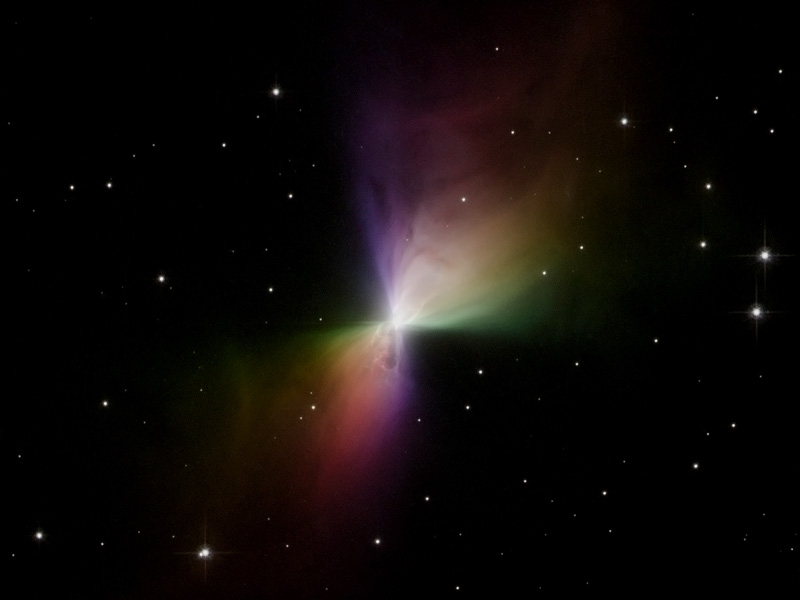Explanation: This symmetric cloud dubbed the Boomerang Nebula was created by a high-speed wind of gas and dust blowing from an aging central star at speeds of nearly 600,000 kilometers per hour. The rapid expansion has cooled molecules in the nebular gas to about one degree above absolute zero - colder than even the cosmic background radiation - making it the coldest known region in the distant Universe. Shining with light from the central star reflected by dust, the frigid Boomerang Nebula is believed to be a star or stellar system evolving toward the planetary nebula phase. This Hubble image was recorded using polarizing filters (analogous to polariod sunglasses) and color coded by the angle associated with the polarized light. The gorgeous result traces the small dust particles responsible for polarizing and scattering the light. The Boomerang Nebula spans about one light year and lies about 5,000 light years away toward the constellation Centaurus.
APOD presents: Astronomy Pictures of the Year for 2007
1999 2000 2001 2002 2003 2004 2005 2006 2007 2008 2009 2010 2011 2012 2013 2014 2015 2016 2017 2018 2019 2020 2021 2022 2023 2024 2025 |
Yanvar' Fevral' Mart Aprel' Mai Iyun' Iyul' Avgust Sentyabr' Oktyabr' Noyabr' Dekabr' |
NASA Web Site Statements, Warnings, and Disclaimers
NASA Official: Jay Norris. Specific rights apply.
A service of: LHEA at NASA / GSFC
& Michigan Tech. U.
|
Publikacii s klyuchevymi slovami:
planetary nebula - Planetarnaya tumannost' - polyarizaciya sveta
Publikacii so slovami: planetary nebula - Planetarnaya tumannost' - polyarizaciya sveta | |
Sm. takzhe:
Vse publikacii na tu zhe temu >> | |
